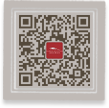- 中文
- EN
- Français
- 日本語
- 한국어
- 繁體中文
Red Flag Raised over Endangered Antiquities

A worker displays a red list of endangered Chinese cultural objects on Tuesday during the general conference of the International Council of Museums in Shanghai.
A red list of endangered Chinese cultural objects was released on Tuesday at the 22nd general conference of the International Council of Museums (ICOM).
From ceramic objects dating back to 8,000 BC, to paintings, calligraphic works, textiles and accessories, the red list covers 13 categories of objects at risk of being smuggled and sold on the market illegally.
To maximize its effectiveness, the list has been published in Chinese - both simplified and traditional characters - as well as in English.
"The red list has been designed as a tool to assist museums, dealers in art and antiquities, collectors, and customs and law enforcement officials in the identification of objects that may have been looted and illicitly exported from China," said Julien Anfruns, director general of the ICOM.
A brochure listing all the categories of endangered objects, together with pictures to help identification, will be delivered to customs and border police checkpoints across the world.
"We are still working on a list of specific objects that were illicitly exported from China after 1970 (when the Convention on the Means of Prohibiting and Preventing the Illicit Import, Export and Transfer of Ownership of Cultural Property was issued by the United Nations Educational, Scientific, and Cultural Organization) and should be returned," said Song Xinchao, deputy director of the State Administration of Cultural Heritage.
Due to many of China’s antiquities having been stolen from archeological sites, it is a challenge to provide concrete evidence of the stolen property, he said.
To resolve these issues, it is important not to get emotional, but to follow legal channels to establish rightful ownership of the property, he added.
Acclaimed auction houses, such as Sotheby’s and Christie’s, have worked closely with China’s cultural institutions.
"They were ready to contact the Chinese government about items suspected of having been illegally exported from China and offer to stop the auction if we provided the right evidence," Song said.
Detailed contact information of China’s State Administration of Cultural Heritage and the Ministry of Public Security are printed on the brochure to enable people to promptly inform the authorities when they find endangered objects on the list.
"We are helping China to establish precise inventories of its cultural objects, with detailed descriptions to prove the objects belong to a certain collection," Anfruns said.
The ICOM has continuously sought to fight against illegal trafficking of cultural objects. It has published eight red lists concerning objects in different regions in the world, as well as emergency red lists for cultural objects at risk in wars and natural disasters.
The six-day tri-annual conference, themed Museums for Social Harmony, began on Sunday and is being attended by nearly 3,600 museum workers from 122 countries and regions across the world.



